Can Mangsho really be considered niramish? Absolutely not! If you're familiar with Bengali clan or the Bengali language, you'll understand that the term Niramish Mangsho is completely contradictory. We even refer to Enchor, or raw Jackfruit, as vegetarian meat. So why is it called this? Let's delve into the renowned Kalipujor Bhoger Mangsho!
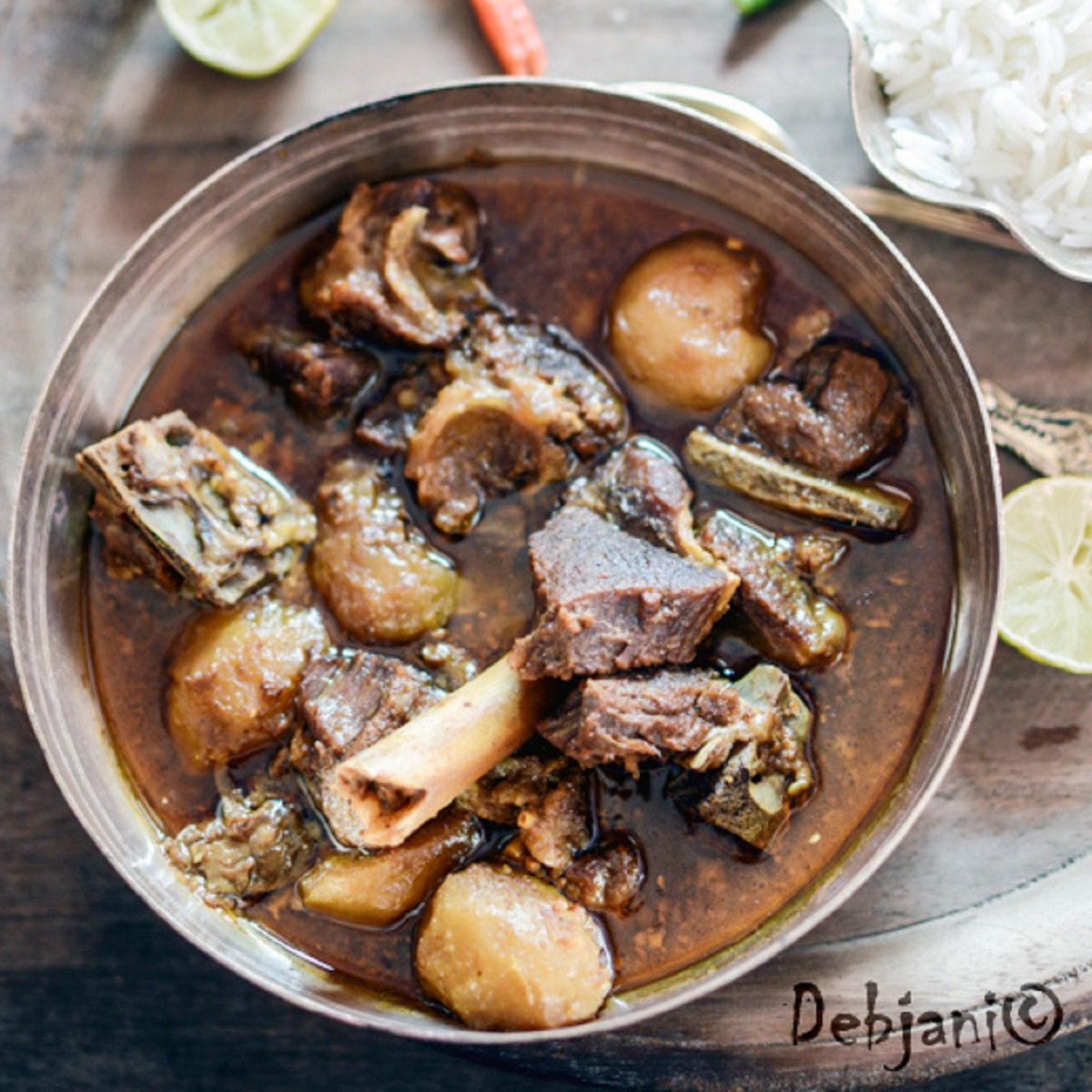
Jump to:
- Niramish Mangsho, an oxymoron?
- What Makes Bhoger Mangsho Different?
- My Niramish Mangsho memories; Kolkata part!
- Bhoger Mangsho and Moluti
- Direct to the recipe of Bhoger Mangsho!
- Recipe Variation
- Niramish Mangsho, a few important notes!
- Here's how I cook Niramish Mangsho at Debjanir Rannaghar!
- Recipe Card
- Niramish Mangsho Recipe Video
- Frequently Asked Questions
- Pairing
- Mutton Recipes from Debjanir Rannaghar!
- Bengali No Onion No Garlic Recipes
- Have you tried the Pujor Bhoger Piyaj Roshun Chara Mangsho recipe from Debjanir Rannaghar!
- Here's the Perfect Niramish Mangsho Recipe Pin for your Pinterest Board!
Niramish Mangsho, an oxymoron?
Well, in every dialect, there are a few phrases, which cannot be described by a word or a typical meaning. Niramish Mangsho is one such term. In Bengali cuisine, anything cooked without onion and garlic (and in a few cases, without a few more ingredients) is termed Niramish. As this particular meat curry is cooked without onion and garlic, we often refer to it as Niramish.
What Makes Bhoger Mangsho Different?
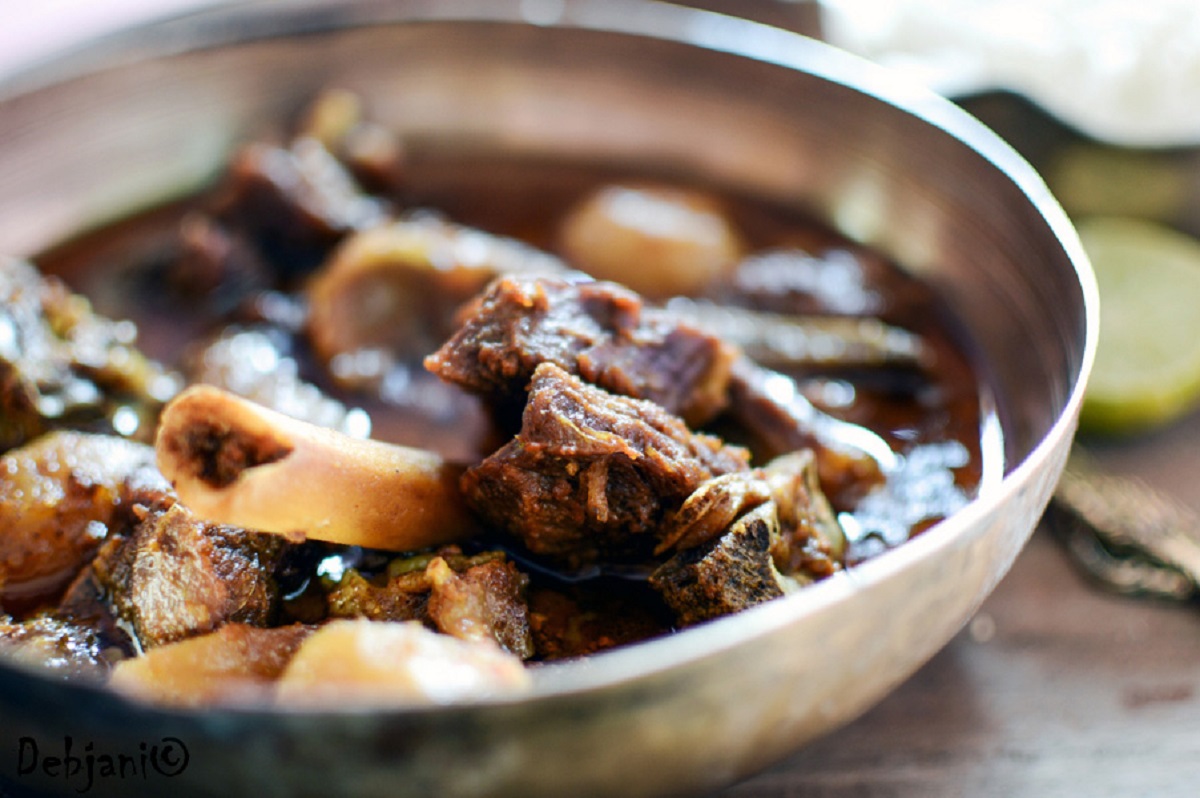
In Bengal, when preparing bhog, we refrain from including onion and garlic. Our goddesses (Devi Durga or Kali) are served both meat and fish. The bhog is meticulously cooked without the use of onion and garlic. The meat dish prepared for bhog is known as Bhoger Mangsho. This delectable dish is commonly prepared on Durgasthami or the day following Deepavali.
My Niramish Mangsho memories; Kolkata part!
Bhoger Mangsho, a delightful Bengali dish known as Niramish Mangsho, holds a special place in my heart. Growing up in a bustling North Kolkata household with 28 members, I was fortunate enough to be immersed in the rich flavors of Bengali culture and traditions. While I didn't adopt every aspect, I had the privilege of experiencing them all, which led me to establish my own set of customs. Kali puja, a significant event for us, always took precedence over Diwali in our neighborhood. Witnessing my father's dedication to fasting throughout the entire day (and night) of Kalipujo filled me with a sense of inspiration. As a teenager, I even began to join Baba in observing the Kalipujo fast.
Bhoger Mangsho and Moluti
On the flip side, my mother's maternal lineage, specifically my grandmother's family, hails from a quaint village called Maluti in Jharkhand. Every year, I would accompany my mother on our journey to this tiny village during the festivities of Kalipujo. Maluti, situated not too far from the renowned pilgrimage site of Tarapith, is renowned for its temple dedicated to "Devi Molikha." Nestled amidst the Chota Nagpur plateau, Maluti offers an opportunity to immerse oneself in the timeless allure of nature. However, what truly captivated me each year was the vibrant celebration of Kalipuja that engulfed the village.
Direct to the recipe of Bhoger Mangsho!
The Kali puja in this area is heavily influenced by the local tribal community, specifically the Santhal tribe. The tribal essence can be seen in all aspects of the puja, including the eight significant pujas by different family units and one from Santhal clan. One of these rituals, known as the Royal puja of Devi Molikha, strictly follows traditions. Personally, I have always found the puja of Ma Kali, especially the Santhal Puja, to be incredibly inspiring, both in my early years and even now.
Among the various rituals, the sacrifice of livestock, known as "Boli," used to be a common practice during Kalipujo. This tradition is not exclusive to Maluti; it is famous in many places, including Kalighat. On the following day of the puja, it is customary to consume specially prepared sacrificed meat. This meat, known as "Pujor Mangsho" or the "Prasad," is typically made from mutton or goat. However, what sets it apart is the absence of onion and garlic. This unique aspect makes Bhoger Mangsho or Niramish Mangsho truly special.
Recipe Variation
My busy schedule has prevented me from visiting Maluti for years, but I always treasure my mother's stories about her experiences there. It's unimaginable for Maa to miss out on visiting Maluti during Kalipujo. As for the Niramish Mangsho, I've had it in a different form. However, the key is to remember that it should not be prepared with Onion and Garlic. To give it a distinctive flavor, the use of Asafoetida or "Hing" is essential when preparing the Niramish Mangsho or Bhoger Mangsho, as my Dida taught me. The use of yogurt, on the other hand, adds an interesting twist. Some families choose not to use yogurt or curd when making bhog, while others do. We fall into the latter category.
Niramish Mangsho, a few important notes!
We prepare this dish using simple spices, without including tomatoes. Every year, on the day following Kalipujo, I take pleasure in cooking Niramish Mangsho. This tradition allows me to reminisce about my childhood and savor the delightful fragrance of the tender mutton curry.
I have been preparing this dish for many years, even catering to large groups. Throughout time, I have made a few modifications to the recipe, particularly in certain steps. Hence, the written and video recipes for Niramish mangsho differ. It is worth noting that while some families do not add yogurt when cooking bhog, we incorporate it in our regular cooking.
Below, I present you with the method I use to prepare Niramish Mangsho. In my version, I find it essential to include potato chunks and spices tempered in ghee. Additionally, it is important to select mutton with a small amount of fat, around 10%.
Here's how I cook Niramish Mangsho at Debjanir Rannaghar!
PrintRecipe Card
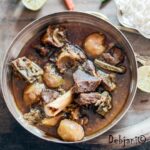
Reminiscence of Kalipujo at Maluti, a tribal village & recipe of Niramish Mangsho or Bhoger Mangsho
- Total Time: 9 hours
- Yield: 6-7 People 1x
Description
Niramish Mangsho, also known as Bhoger mangsho, is a renowned mutton dish cherished in Bengali homes. This delectable preparation is distinct as it is crafted without the inclusion of onion and garlic. It is traditionally offered as bhog during auspicious occasions of Durgapuja or Kalipuja.
Ingredients
- 1kg Mutton (medium size pieces)
- 500g Potato (cut into halves)
- 100g Ginger
- 300g Unflavoured Curd
To Temper:
- 1 Bay Leaf
- 2 Red Chillies
- 10 Clove
- 2 inches Cinnamon Stick
- 3 Green Cardamom
- 2 Black Cardamom
- 1 Tsp. Asafoetida / Hing
Spices:
- 2 Tsp. Cumin Powder
- 2 Tsp. Coriander Powder
- 1 Tsp. Bengali Garam Masala Powder
- 1 Tsp. Red Chili Powder
- 2 Tsp. Turmeric Powder
- 2 Tsp. Sugar
- 1 Tsp. Salt or to taste
- 5 Tbsp. Mustard Oil
- 2 Tbsp. Ghee
Instructions
- Clean and dry the mutton pieces before coating them with a mixture of 100g Card, 1 Tsp. Cumin Powder, 1 Tsp. Coriander Powder, 1 Tsp. Turmeric Powder, and ½ Tsp. Red Chili Powder. Allow the marinade to infuse the meat for approximately 8 hours.
- Prepare the potatoes by peeling them and cutting them in half. Sprinkle a small amount of turmeric powder over the potatoes.
- Combine the remaining Cumin Powder, Coriander Powder, Turmeric Powder, Red Chili Powder, and 1 Tbsp. of Mustard Oil to create a thick paste.
- Additionally, create a smooth paste using fresh ginger.
- Be handy with a pot full of boiling water.
- In a pan, heat the remaining oil. Fry the potatoes until they turn a golden brown color, then strain them from the pan.
- Transfer the remaining oil to a deep pan and add ghee, heating it up. Enhance the oil with bay leaf, red chili, clove, cinnamon stick, green cardamom, black cardamom, and asafoetida.
- Cook for a minute until a delightful aroma is released. Now, add sugar and stir continuously with a ladle to caramelize it, being careful not to burn it.
- Next, add the ginger paste to the mixture and cook on low heat for 2 minutes.
- If the spices are sticking to the edges of the pan, add a little water.
- Add the spice paste, along with some salt, and cook on low heat for 3-4 minutes.
- Beat the curd and add it to the mixture, continuously stirring and cooking for 5 minutes or until the mixture thickens and releases oil.
- At this point, add the marinated mutton to the mixture and continue cooking on low heat, stirring occasionally.
- After about 10 minutes of cooking on low heat, the mutton will start releasing water.
- Finally, add the fried potatoes.
- Cook the mutton with a covered lid for 20 minutes.
- Increase the heat slightly and add 4 cups of boiling water to the mutton.
- Allow the mutton to cook with the added water.
- The cooking process should take around 15 minutes to ensure the mutton is properly cooked, although the time may vary depending on the quality of the meat.
- Add boiling water as needed to maintain the desired consistency.
- Finally, add Garam Masala Powder and 1 teaspoon of Ghee to complete the Niramish Mangsho.
- Check the Recipe video below
Notes
- I prefer a slow cooking process for this particular dish, however, if you are out of time instead of a pan use pressure cooker and cook till 3 whistles coming from the vent weight.
- To give the curry a more dominant red color, use Kashmiri Red Chili Powder instead of the normal one.
- The the amount of Sugar will be depending on the taste bud.
- If you wish, can ignore Ghee completely but that will obviously decrease the special flavor of the dish.
- Prep Time: 8 hours
- Cook Time: 1 hour
- Category: Side Dish
- Method: cooking
- Cuisine: Bengali
Nutrition
- Serving Size: 125g
- Calories: 563
- Sugar: 5.3g
- Sodium: 487mg
- Fat: 29g
- Saturated Fat: 9.1g
- Carbohydrates: 28.4g
- Fiber: 4.1g
- Protein: 45.8g
- Cholesterol: 143mg
Niramish Mangsho Recipe Video
Frequently Asked Questions
Niramish Mangsho, also called Bhoger mangsho, is a famous mutton delicacy beloved in Bengali households. This delightful creation stands out for its unique absence of onion and garlic. Traditionally we serve it as bhog during the auspicious celebrations of Durgapuja or Kalipuja.
The uniqueness of this dish lies in its preparation of Bengali mutton curry without the inclusion of onion and garlic.
Pairing
In addition to steamed rice, these delectable dishes perfectly complement the niramish mangsho.
Mutton Recipes from Debjanir Rannaghar!
- Bengali Mutton Stew with Veggies in a pressure cooker (also known as Shobji diye Mangshor Jhol)
- Nalli Nihari (also known as Mutton Nihari or Gosht Nihari)
- Joggi Barir Mangsho (also known as Biyebarir Mutton Curry)
- Gota Roshun diye Mangshor Jhol (also known as Bengali Mutton Curry with Garlic Pod)
- Bengali Mete Chorchori (also known as Mutton Liver side with Potato chunks)
- Mangsher Ghughni (also known as Bengali Yellow peas curry with minced meat),
- Mutton Handi Kebab (also known as mutton hari kabab)
- Kochi Pathar Jhol (also known as Bengali Mutton Curry)
- Mangshor Jhol (also known as Bengali light Mutton curry)
- Gota Moshlar Mangsho (also known as Kata Moshlar Mangsho | Mutton cooked with whole spices)
- Keema Kaleji (also known as Keema Kalija | Indian mutton mincemeat and mutton liver curry)
- Bengali Keema Curry (also known as Mutton Mincemeat Curry with Potato Chunks)
- Anglo-Indian Mutton Curry (Also known as Anglo-Indian Lamb curry)
- Keema Matar (also known as Mutton mincemeat cooked with green peas)
- Bengali Mete Chorchori (also known as Mutton Liver side with Potato chunks)
- Kolkata Mutton Biryani (also known as Calcutta Biryani)
- Posto Mangsho (also known Bengali Mutton Curry cooked with Poppy Seed Paste)
- Kolkata’s Mutton Tikia (Also known as Tikiya Kabab)
Bengali No Onion No Garlic Recipes
Have you tried the Pujor Bhoger Piyaj Roshun Chara Mangsho recipe from Debjanir Rannaghar!
Please inform me of your experience and feel free to send a photo to dolonchttrj@gmail.com. Additionally, you can find me on various social media platforms such as Instagram, YouTube, Facebook, Pinterest, Google News, X, and Thread. Don't forget to use the hashtag #debjanirrannaghar when sharing your attempts at my recipes or if you have any questions or recipe requests.
Here's the Perfect Niramish Mangsho Recipe Pin for your Pinterest Board!
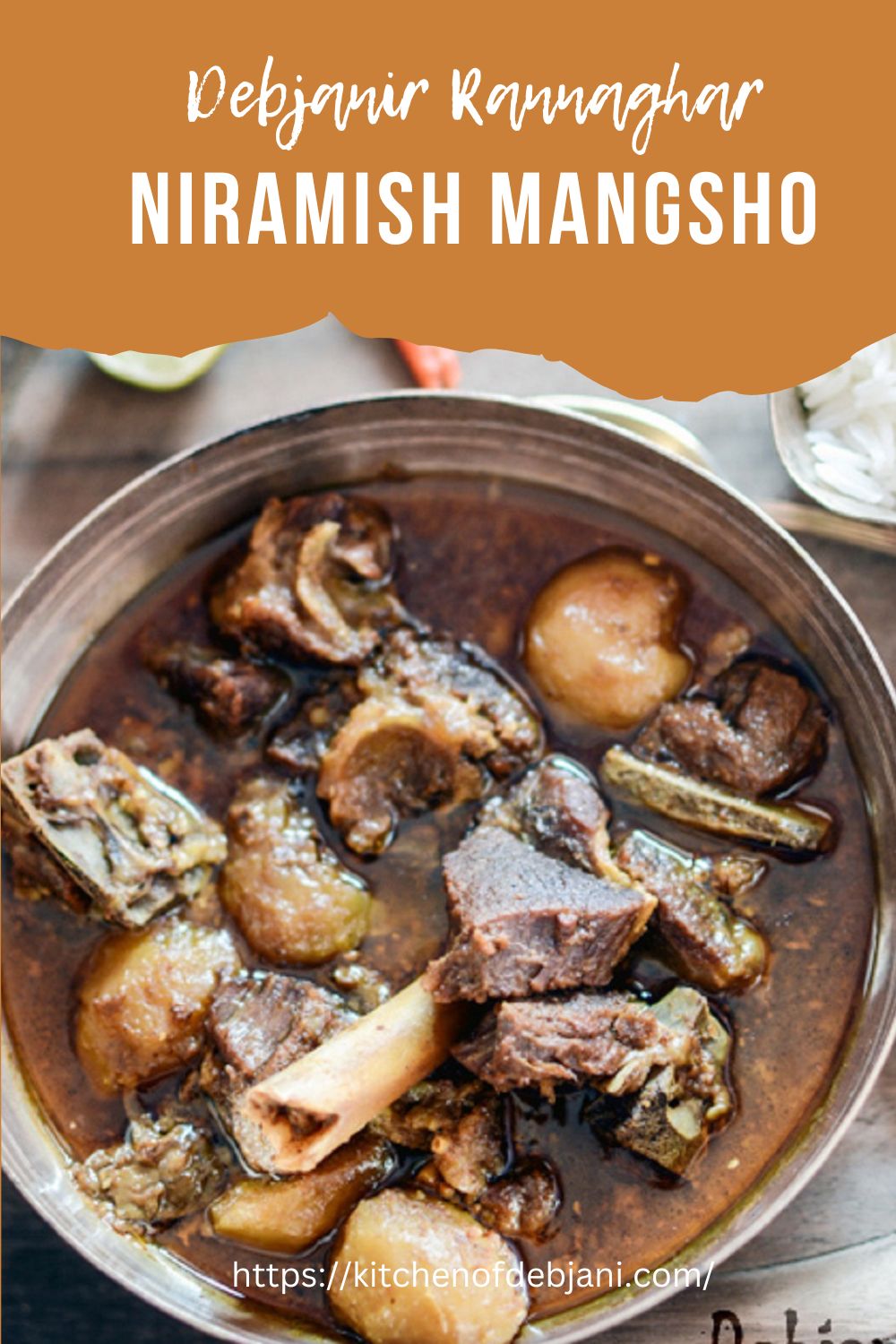

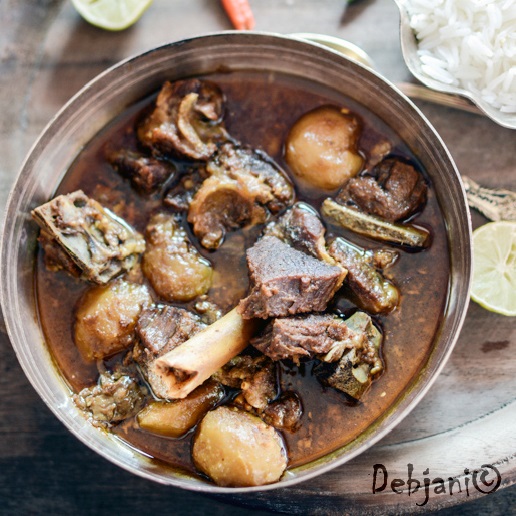
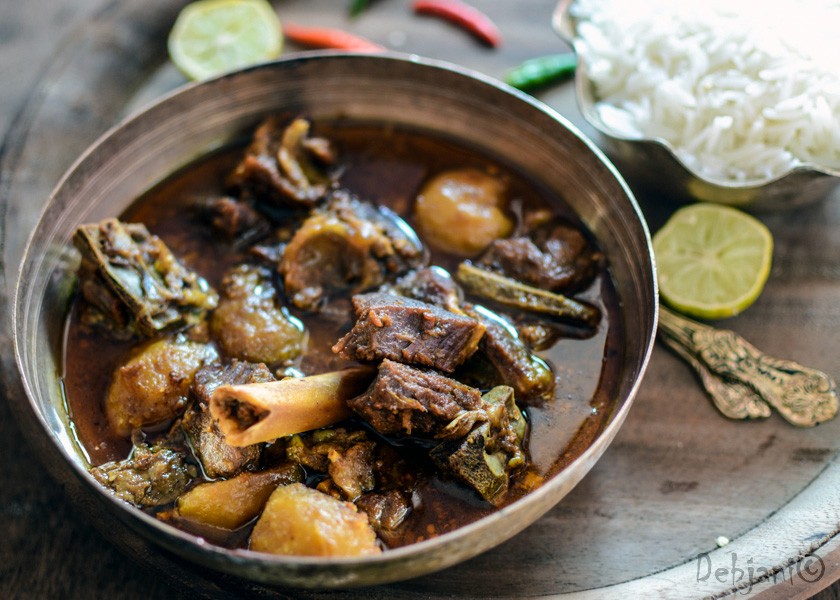
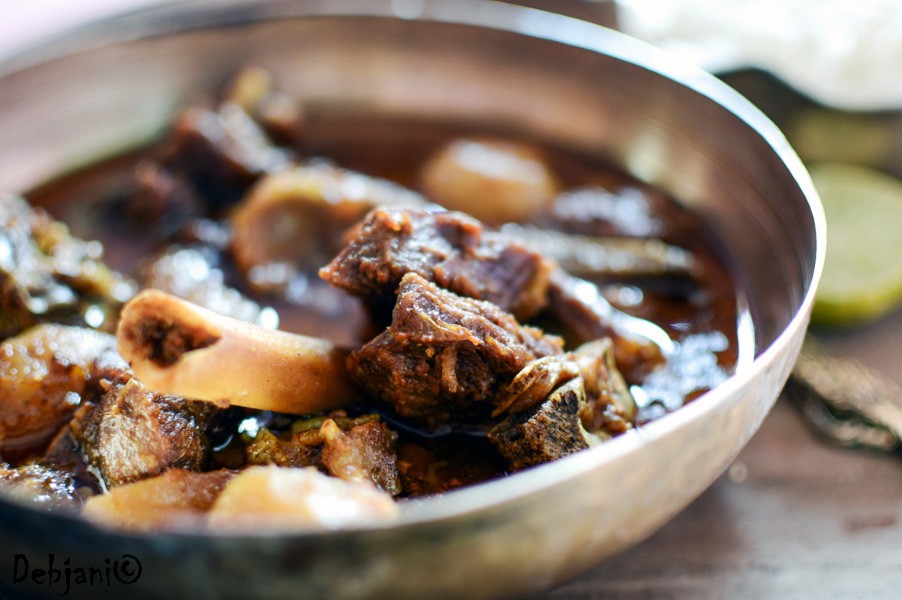
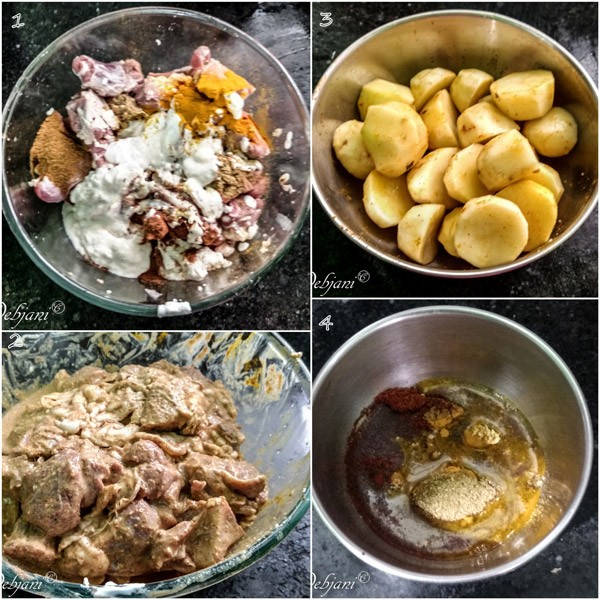
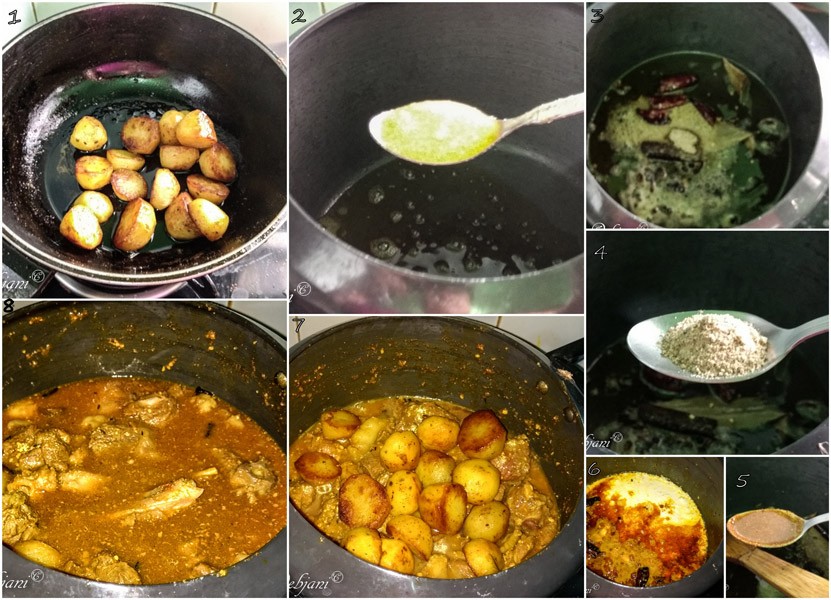
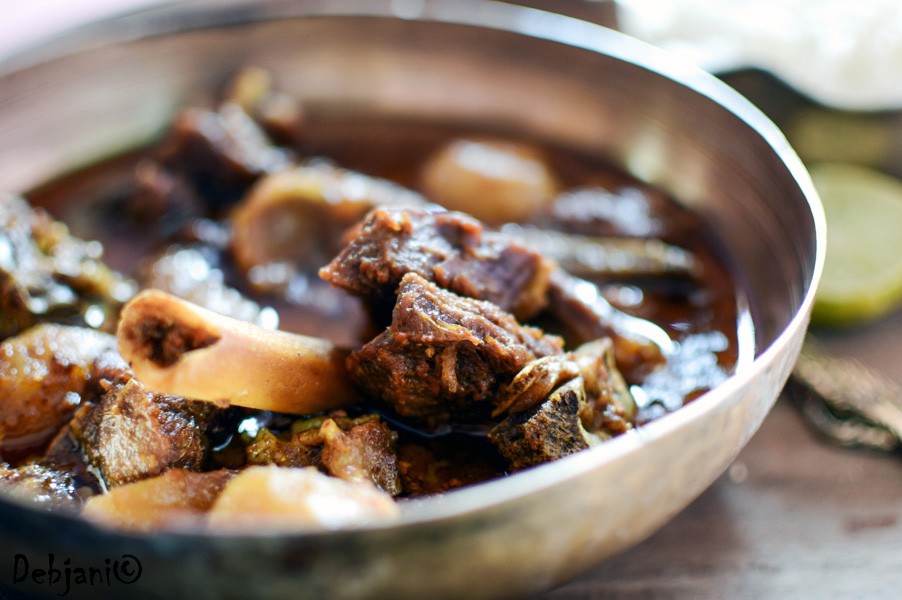

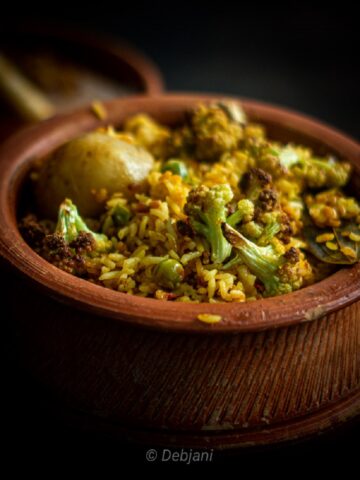
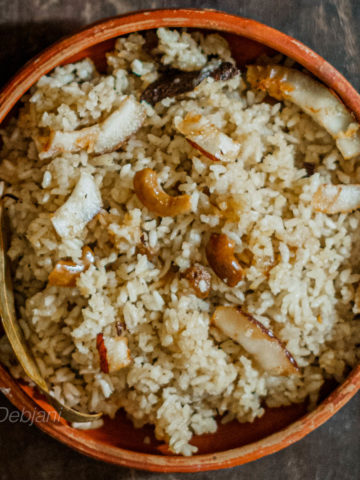
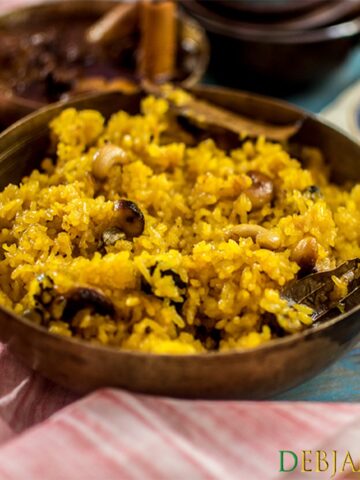
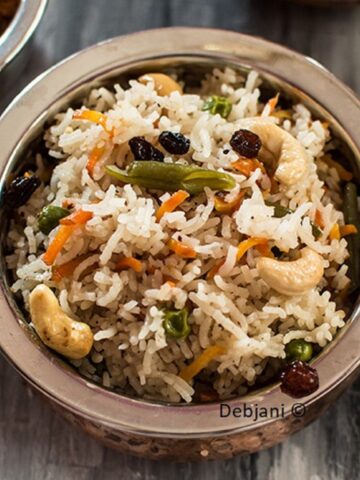
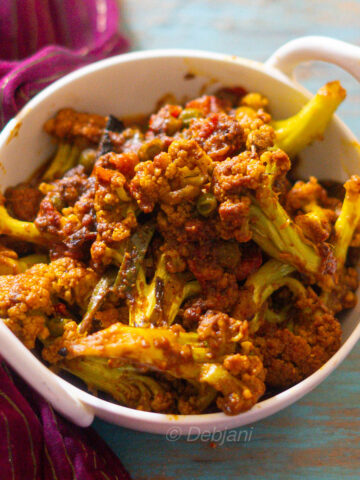
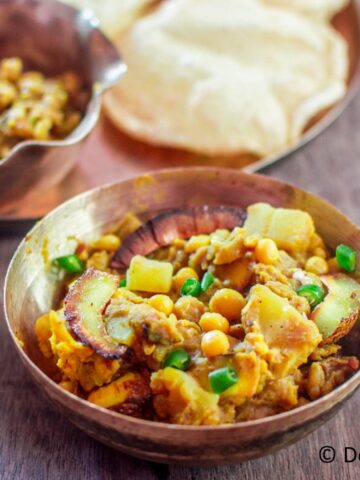
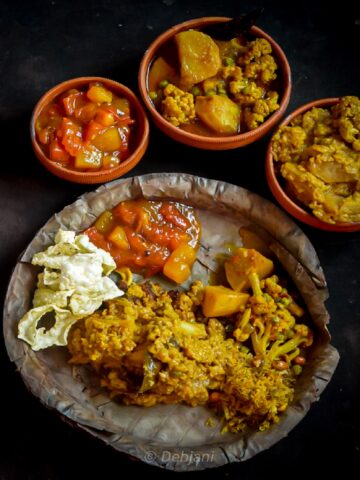
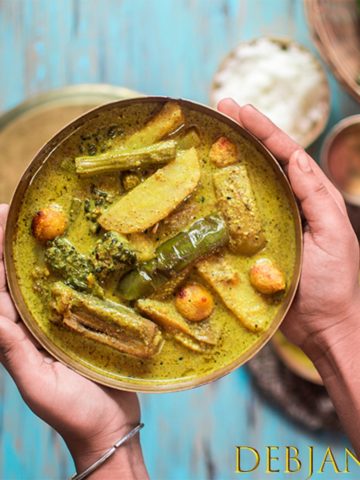


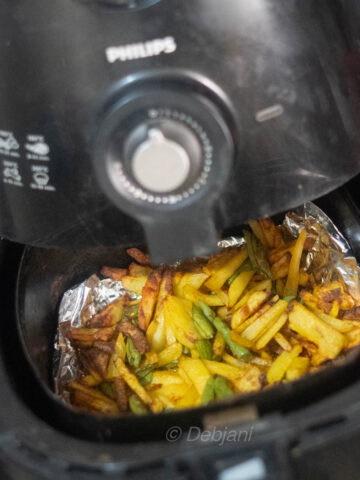

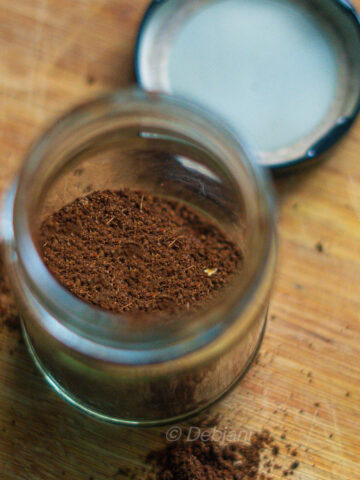
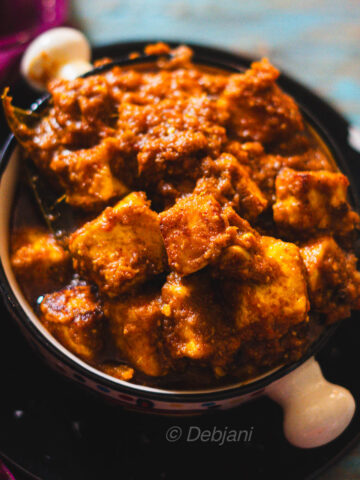
Leave a Reply